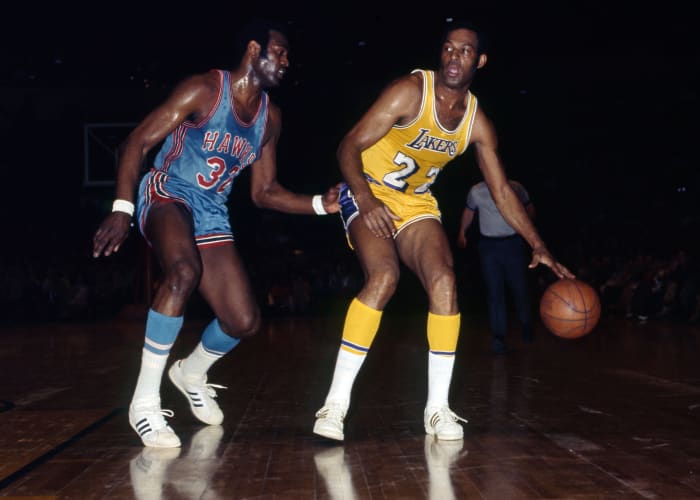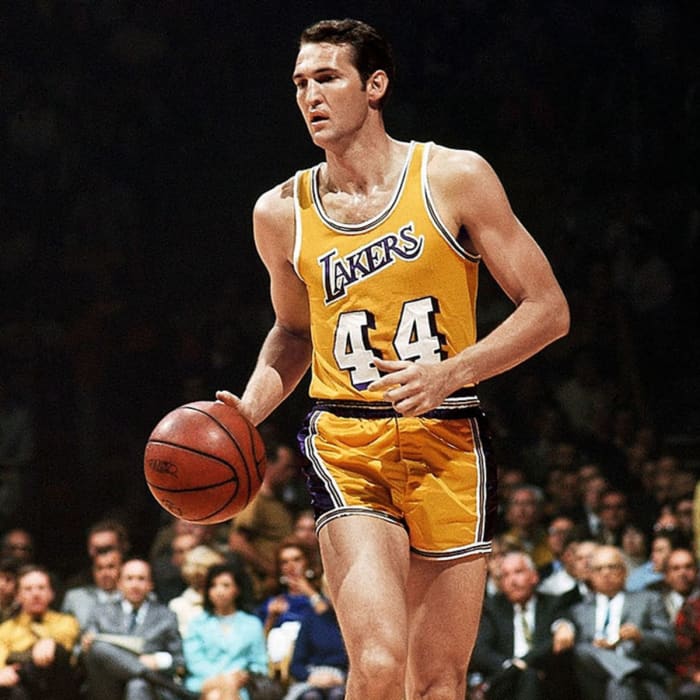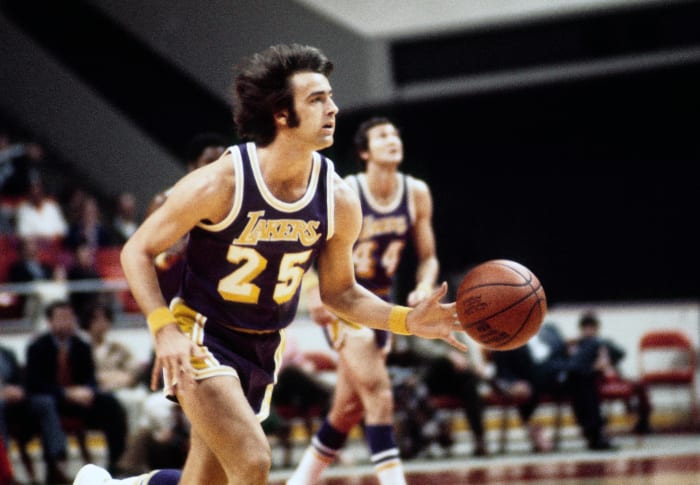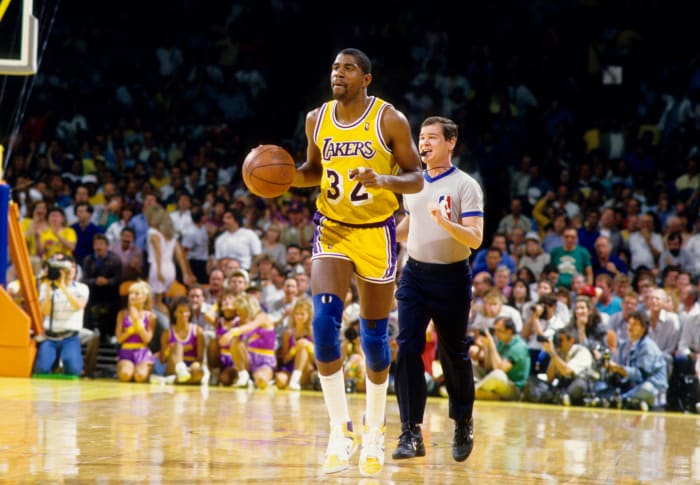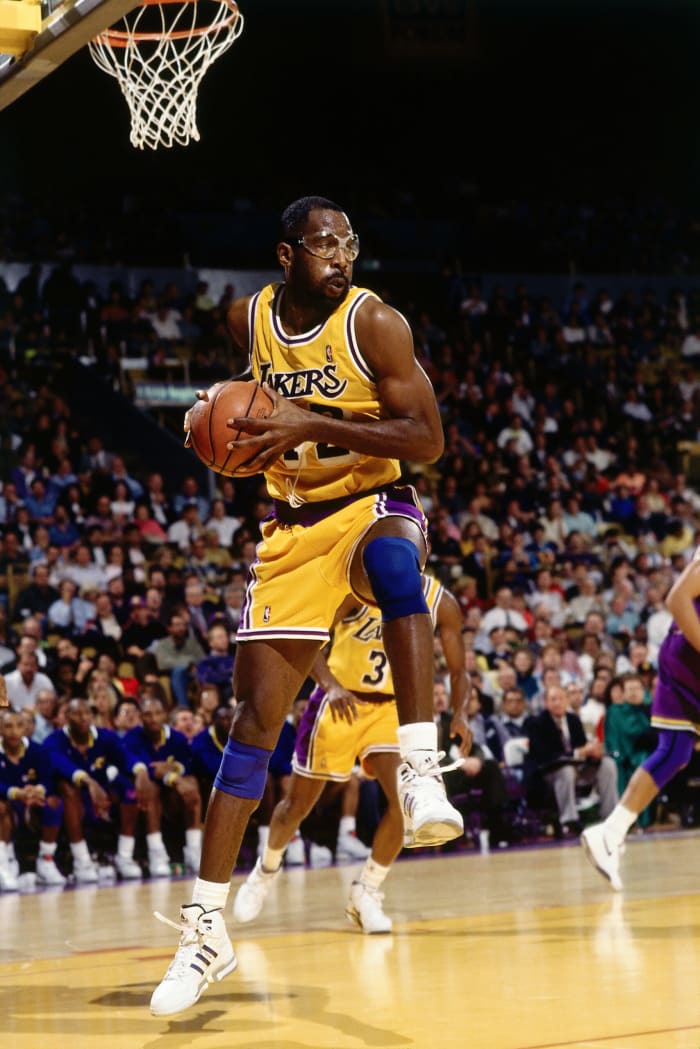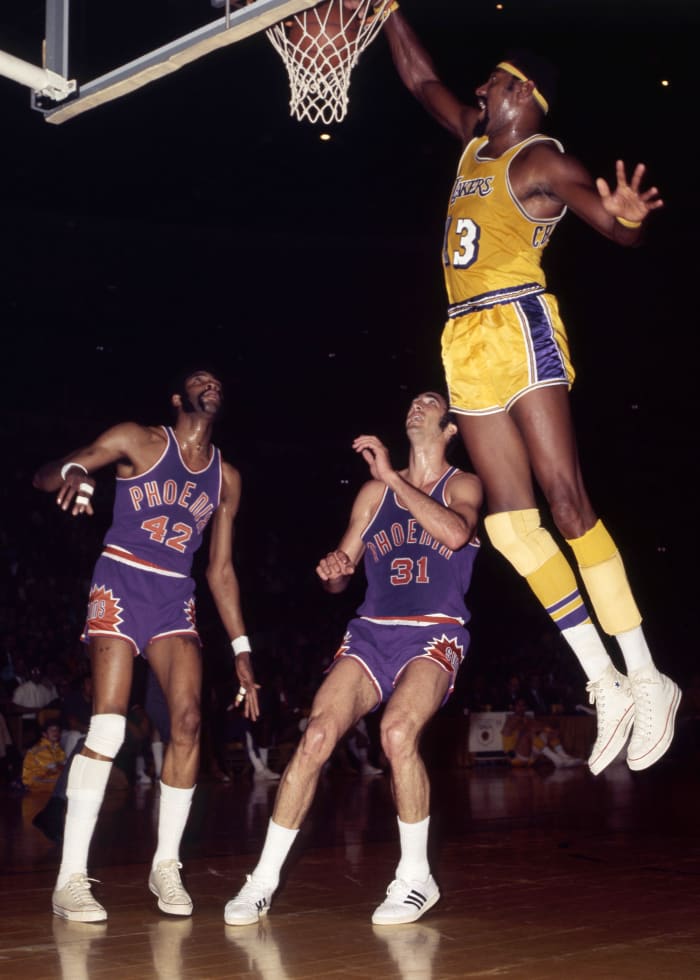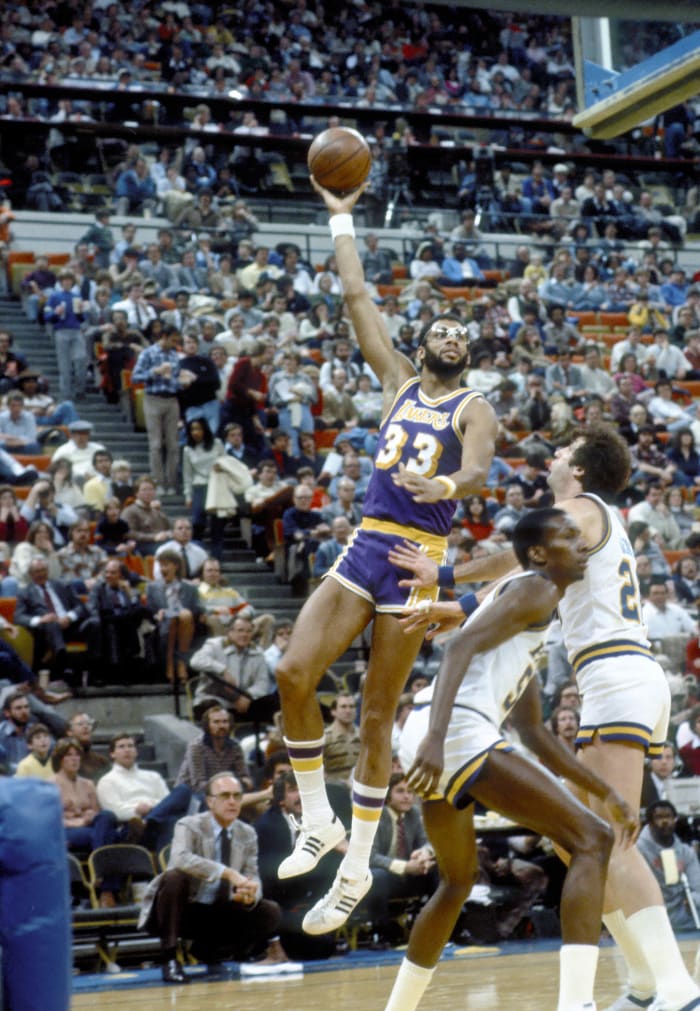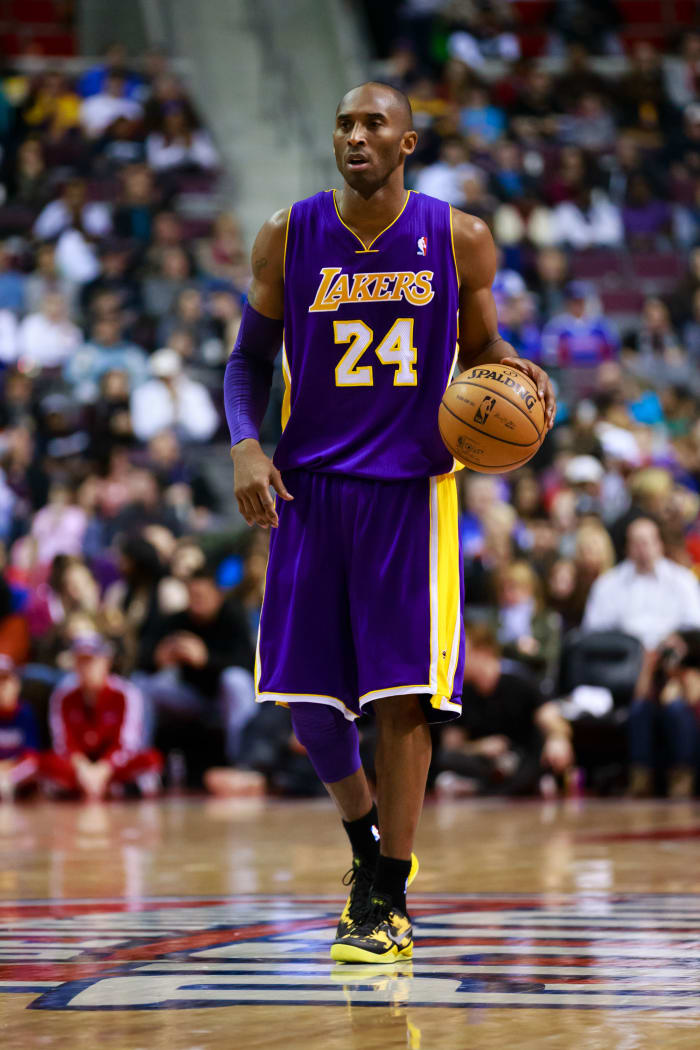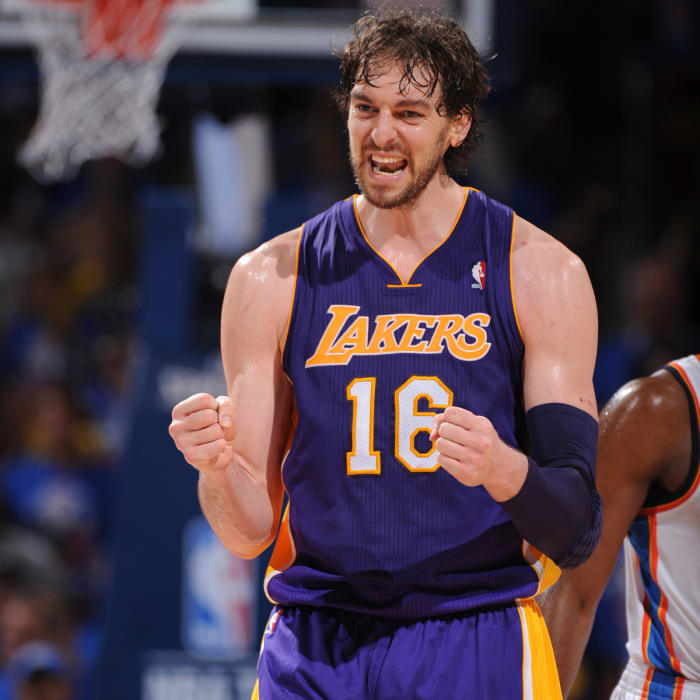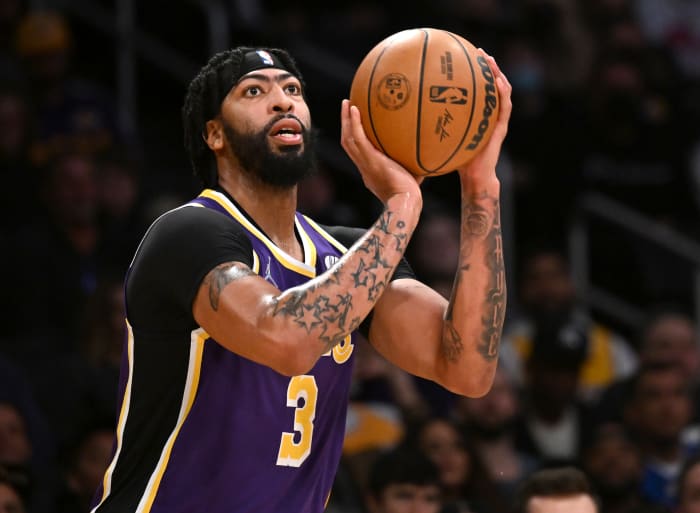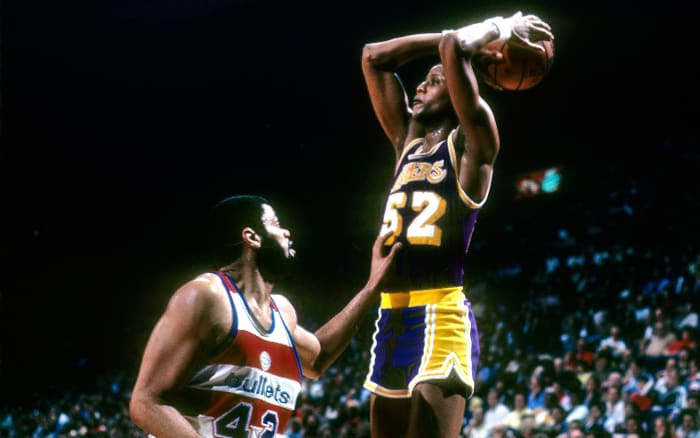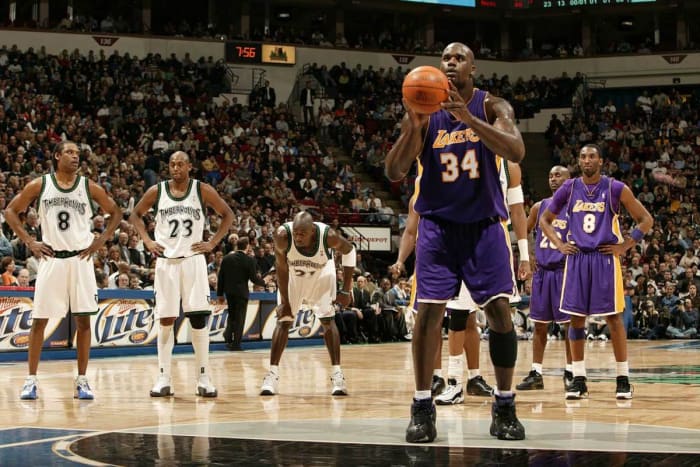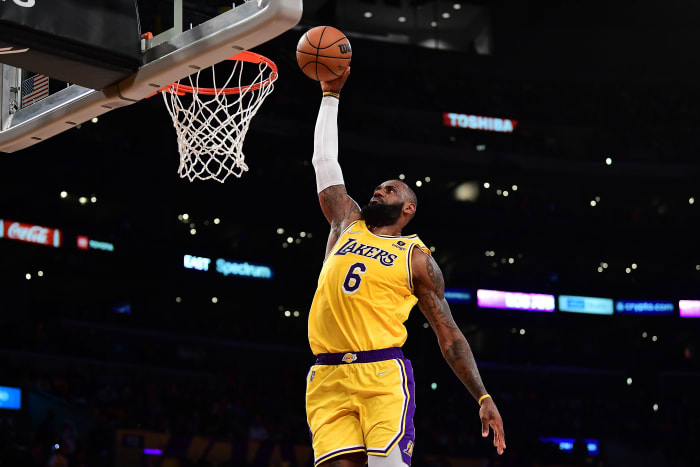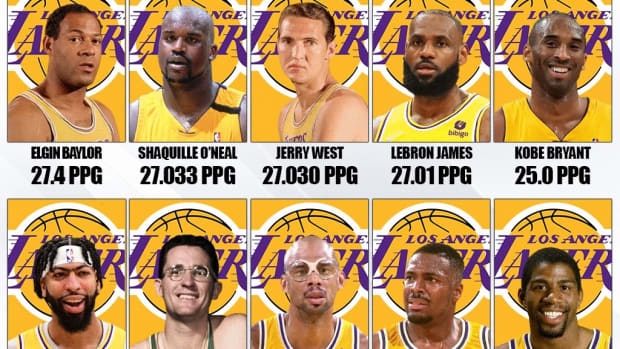
The Lakers endured the most disappointing season in NBA history during the 2021-22 season, finishing with an ugly 33-49 record, outside of the play-in tournament. The Lakers gave up three quality role players, Kyle Kuzma, Kentavious Caldwell-Pope, and Montrezl Harrell, for former MVP Russell Westbrook. Brodie struggled throughout the season, shooting 29.8% from deep while coughing the ball up a league-leading 295 total times and playing uninterested point-of-attack defense. Meanwhile, Kuz, KCP, and Harrell played solid basketball during the year, making the Lakers’ acquisition of Westbrook all the more painful.
LeBron James and Anthony Davis were in and out of the lineup throughout the season with varying injuries, depriving the Lakers’ top-heavy roster of its two catalysts and ruining any chance of creating championship chemistry. At the same time, Dwight Howard, Carmelo Anthony, Trevor Ariza, and Kent Bazemore, four veteran imports who were supposed to fill out the lineup as high-quality two-way role players, looked slow and mostly lost in 2021-22.
Needless to say, the Lakers will have their work cut out for them during the 2022 offseason to get back to respectability.
There is no better way to plan out a summer renovation than to peruse the history books. The Purple and Gold’s past provides us with a truckload of ways to build a contender.
The Lakers have created 17 championship rosters throughout their storied history. We’ll look back at the different superstars the Purple and Gold acquired through the NBA draft, via trade, or from free agency.
Drafted
Elgin Baylor
The Lakers finished the 1957-58 season 19-53, a real mess with next to no fan interest. During the late 50s through the early 80s, the NBA was a completely different beast than today’s modern league that racks in billions of dollars yearly and generates worldwide interest. Back then, teams came and went, and the Minneapolis Lakers were in danger of going bankrupt until Elgin Baylor joined the club in 1958 as their number one draft pick.
Elgin Baylor averaged 31.3 PPG throughout his three-year collegiate career, and he dragged his Seattle University squad to the NCAA Finals before eventually losing to the deeper and more talented Kentucky Wildcats during his final season. Baylor jumped into the NBA superhero-style, leaving a three-foot crater in the concrete with a tangle of deep cracks protruding out. He averaged 24.9 PPG, 15.0 RPG, and 4.1 APG during his freshman campaign, helping the Lakers end the regular season with a 33-39 record, a 14-game improvement on their previous season, giving the squad a life-saving injection of hope.
The Lakers moved to Los Angeles during Elgin Baylor’s third season (1960-61), beginning a decade of Western Conference dominance that never led to a championship due to the juggernaut Celtics. Baylor ended his 14-year career without hanging a banner, but with the knowledge, he helped save the Lakers as he made 10 All-Star appearances and was elected to the Hall-of-Fame.
Jerry West
Jerry West’s high school years bang out a similar beat to Michael Jordan’s. He was an undersized kid who didn’t make the varsity squad his freshman and sophomore years. West didn’t quit or sulk, though. He drank down the hate and let it push him into becoming a tireless worker. West often spent hours practicing his jumper in the snow until his fingers bled and his mom’s screams dragged him back to the house. Jerry West eventually made the varsity squad during his junior year but acted mainly as a scowling cheerleader from the bench. West went through a growth spurt during the summer between his junior and senior year, sprouting to over 6-feet tall, and with his added height, his high school coach finally gave him a shot. And the rest is history. Jerry West ruined the West Virginia high school competition, averaging 32.2 points per game, ultimately leading his squad to a state title while earning a spot on the West Virginia University men’s basketball team.
Jerry West was a two-time All-American at WVU before the Purple and Gold selected him with the second overall pick in the 1960 NBA draft, teaming up The Logo with Elgin Baylor and forming the Lakers first of many Hall-of-Fame inside-out duos. Jerry West’s Lakers career paralleled Elgin Baylor’s. His championship hopes were repeatedly dashed by the 1960s Boston Celtics behemoth. He was also a mainstay on the All-Star team and was selected to the Hall-of-Fame. However, Jerry West’s career veered away from Baylor’s in one crucial aspect. West led the Lakers to his lone title the year Baylor retired in 1972 over the New York Knicks.
Gail Goodrich
Gail Goodrich’s career was a win for all the people around the world who were told they were too small to make it. Goodrich, at 6-foot-1, went destructor during his high school days in Los Angeles but was seen as too thin and too short to succeed in college. The famed John Wooden took a chance on Goodrich, and like many of the legendary UCLA coach’s decisions, he proved correct to give a scholarship spot to the LA native.
Goodrich became an All-American at UCLA, helping lead the Bruins to two national championships, but he was still seen as too small to get it done in the pros. Similar to John Wooden, the Lakers took a chance on Gail Goodrich and his 170-pound frame, using their territorial pick (a special pick that was available in the NBA from 1950 to 1965 which allowed a team that’s stadium was located within 50 miles of a collegiate athlete’s university to supersede every other organization, no matter their draft position, to select the local player) to choose him in the 1965 NBA draft. Then the Lakers proceeded to mostly sit Goodrich on the bench during his first three seasons on the squad before the Phoenix Suns acquired him in the expansion draft before his fourth campaign. Gail Goodrich blew up on the Suns, averaging 23.8 PPG, but more importantly, showing off excellent playmaking chops by notching 6.4 APG.
Goodrich stayed with the Suns for two seasons, and then the Lakers traded 7-foot center Mel Counts to get their end-of-the-bench, turned star point guard, back in the fold. Gail Goodrich teamed up with Jerry West in the backcourt alongside Wilt Chamberlain at the center position and stomped out an NBA record 33-game win streak during the 1971-72 season on their way to the title.
Gail Goodrich ended up leaving the Lakers in 1976 for the New Orleans Jazz, concluding his Purple and Gold career as a one-time champion, five-time All-Star, and eventual Hall-of-Famer.
Magic Johnson
The Lakers would wait nearly a decade-and-a-half before making their next superstar draft pick, selecting Magic Johnson out of Michigan State in the 1979 NBA draft with the first overall pick.
If you’re an NBA fan, you know Magic’s story. He dominated the league as a constant triple-double threat, leading the Lakers to the title during his rookie season before hanging four more banners in the 80s. Magic Johnson was a three-time MVP, four-time Assists Champion, and a ten-time All-NBA selection. And then, he was struck by the HIV in 1991, cutting down the 31-year-old while he was still in his prime.
Magic Johnson’s true impact on the Lakers has been highlighted on HBO’s new hit show, “Winning time: the rise of the Lakers dynasty.” Dr. Jerry Buss risked his entire bankroll on purchasing the Lakers in 1979 and was tapped out towards the end of the season. The Lakers could have easily fallen into bankruptcy if Magic Johnson had not led the Purple and Gold to a championship in 1980, denying Los Angeles its most popular professional sports team.
So, Magic Johnson could very well be the most influential athlete in Lakers’ history, a genuine saving grace.
James Worthy
James Worthy helped lead the University of North Carolina to the NCAA championship during his junior year and he was named the Most Outstanding Player at the Final Four. Worthy decided to forgo his senior year and entered the NBA draft in 1982. The Lakers coming off a championship the previous season, had an embarrassment of riches, including Magic Johnson, Kareem Abdul-Jabbar, Jamaal Wilkes, Norm Nixon, Michael Cooper, and Bob McAdoo. But thanks to a trade with the Cavaliers in 1980, the Purple and Gold had the number one pick in 82. The Lakers added to their treasure chest of talent by selecting James Worthy.
Worthy averaged 17.6 PPG, 5.1 RPG, and 3.0 APG, solid numbers, but nothing that jumps off the page and screams, “Hall-of-Famer!” And yet, Worthy is a Hall-of-Famer due mainly to his ability to level up in the playoffs and morph from James Worthy to Big Game James. The Lakers big man increased his playoff statistics to 21.1 PPG, 5.2 RPG, and 3.2 APG. In addition, his capability to get out on the break with Magic Johnson in conjunction with his 110% defense helped the Lakers win titles in 1985, 1987, and 1988.
James Worthy played with a Who’s Who list of scoring legends on the Lakers throughout his 12-year career, sapping the juice from his overall regular season statistics. Still, Worthy was an all-time great two-way player who shined when the lights were brightest.
Traded
Wilt Chamberlain
Wilt Chamberlain owns some of the most awe-inspiring records in NBA history. He holds the NBA single-game record for points (100), rebounds (55), consecutive field goals made (18), and he averaged 50.4 PPG during the 1961-62 season, a feat that will likely never be duplicated. Perhaps even more impressively, he was third in the league in assists during the 1966-67 season with 7.8 per game, and the following season he led the league in assists at 8.6 per game.
Wilt Chamberlain mixed Shaq’s power (he was 7-1, 275-pounds) with Dennis Rodman’s rebounding prowess and Chris Webber’s big man passing skills. All in all, Chamberlain was one of, if not the most talented basketball player in NBA history.
Chamberlain came into the league in 1959 with the Philadelphia Warriors and played with the team for six seasons as it shifted to San Francisco. Wilt Chamberlain was traded from the Warriors back to Philadelphia to join the 76ers and played in The City of Brotherly Love until 1968. Despite Chamberlain’s ability to impact all facets of the game, he won only one championship during his prime in 1967, constantly getting shut out by Bill Russell and the Boston Celtics. By the 1968 season, the constant abuse Chamberlain took under the basket began to wear on him, and his production suffered. The 76ers traded him to the Lakers.
Wilt Chamberlain spent his final five years with the Purple and Gold, helping them reach the Finals four times, and winning one championship in 1972.
Kareem Abdul-Jabbar
Kareem (then known as Lewis Alcindor Jr.) entered the 1969 draft after leading the UCLA Bruins to three consecutive NCAA championships in 1967, 1968, and 1969. The Milwaukee Bucks had the number one pick in the draft and wisely chose Alcindor Jr. He averaged 28.8 PPG and 14.5 RPG during his rookie campaign as he helped the Bucks finish the season with a 56-26 record. During the 1970 offseason, Milwaukee landed Oscar Robertson in a trade, and the Bucks went on to dominate the league, taking home the 1971 title as Alcindor won the NBA MVP Award and the Finals MVP Award.
Before the 1971-72 season, Alcindor Jr. converted to Islam and changed his name to Kareem Abdul-Jabbar. Kareem won three MVP awards in Milwaukee, but he never climbed the mountain again with the Bucks. Kareem’s lack of team success and the dearth of fellow Islamic practitioners in small-town Milwaukee led him to request a trade to New York or Los Angeles before the 1975 season. The Bucks honored Kareem’s request, sending him to the Lakers. Kareem Abdul-Jabbar moved on to become the number one scorer in NBA history (38,387 points) behind his unstoppable skyhook. He also won three more NBA MVP Awards with the Purple and Gold and, most importantly, led Los Angeles to five championships in 1980, 1982, 1985, 1987, and 1988.
The Los Angeles Lakers’ 1975 swap for Kareem Abdul-Jabbar was hands down the best trade in NBA history.
Kobe Bryant
If the Lakers’ trade for Kareem was the finest deal in NBA history, their draft-day swap with the Hornets for Kobe Bryant is a close second. Lakers general manager, Jerry West, became enthralled with Kobe during his now-legendary pre-draft workout. Bryant, 17, all skin and bones, obliterated Michael Cooper, a top-5 perimeter defender of all time and former Defensive Player of the Year, during a 30-minute one-on-one session that saw him shift back and forth from immaculate post moves to blow-by drives in a way that left Coop completely bewildered. In other words, Kobe Bryant, fresh out of high school, destroyed Cooper, the player Larry Bird described as the most formidable defender he ever matched up against, scoring at will from every level of the court.
The Lakers saw enough during that workout. They traded center Vlade Divac to the Charlotte Hornets for the rights to the 13th pick in the draft, which they used to select Kobe Bryant. And the rest is history.
Kobe Bryant blended his mythological work ethic (you know the stories, he regularly woke up at 4:00 am) while driving out every ounce of fear from his body on his way toward 15 All-NBA selections, 12 All-Defensive selections, 18 All-Star selections, and most importantly five championships.
Pau Gasol
The Memphis Grizzlies selected Pau Gasol with the third pick in the 2001 draft, and after winning the Rookie of the Year Award, he quickly became their most valuable player, leading them to the playoffs in 2004, 2005, and 2006. However, after missing the 2006-07 postseason and starting off 2007-08 at 13-33, Grizzlies management decided it was time for a change. They traded Pau Gasol to the Lakers for Kwame Brown, Javaris Crittenton, Aaron McKie, the draft rights to Marc Gasol, and two first-round picks in a deal that was so one-sided it created hundreds of thousands of new conspiracy theorists who thought the league manufactured the swap to help their premier franchise get back on top to boost national TV ratings.
The trade was puzzling, to say the least. The Lakers sent out three negative contributors, then little-known prospect Marc Gasol, and two back-end first-round picks for a game-altering big man in Pau Gasol. With Kobe Bryant, Lamar Odom, and Andrew Bynum already in tow, the Lakers predictably took off with Gasol manning the middle, finishing the season 22-5 with Pau in the starting lineup. The Purple and Gold then cruised through the Western Conference playoffs before Kevin Garnett and the Celtics shoved them to the ground during the Finals. The Lakers got back up during the following two seasons, hanging banners in 2009 and 2010 as Gasol averaged 18.3 PPG and 10.8 RPG and then 19.6 PPG and 11.1 RPG during the playoffs, respectively.
Anthony Davis
LeBron James came to the Lakers in 2018 and promptly missed the playoffs for the first time since his third season in the league. The Lakers pivoted against their trip to the lottery during LBJ’s inaugural campaign in Hollywood by shipping out two crates of talented young players and future assets.
Here’s a breakdown of the trade:
The Lakers sent Lonzo Ball, Brandon Ingram, Josh Hart, three first-round draft picks, and rights to a first-round pick swap for Anthony Davis on June 15, 2019.
The Lakers won a title during Anthony Davis’s first campaign in Los Angeles. However, they got dumped in the First Round of the playoffs last year and suffered through the most disappointing season in NBA history this year, missing the playoffs entirely as AD was in and out of the lineup with varying injuries.
No one can say Anthony Davis isn’t a superstar with top-10 talent. And he did help the Lakers hang their 17th banner. However, the jury’s still out on this trade. The Lakers gave up a ton of talent to land AD, and with the way the roster is devoid of depth and youth, it’s difficult to see a championship path forward. A roster featuring Lonzo Ball, Josh Hart, Brandon Ingram, LeBron James, and, let’s say, JaVale McGee would be a top-3 squad in the NBA with a real shot at the title this season and beyond.
We’ll have to see how the Purple and Gold perform over the next few years before we grade their trade for Anthony Davis.
Signed
George Mikan
George Mikan was the Lakers’ first of many legendary big men. Mikan originally played with the Chicago American Gears, but when the Gears declared bankruptcy, a lottery gave the Lakers the rights to sign Mikan.
The average height of men in the U.S. during the 1940s was under 5-8, which led to a darting, quick-hitting basketball league full of smallish players who used their speed to excel. And then came George Mikan, at 6-foot-10, 245-pounds, a literal giant among men who dominated the league from the inside in a way never before seen.
The Minneapolis Lakers tossed away the NBA’s perceived rules of offense and defense, placing Mikan in the middle and allowing him to use his back-to-the-basket game to rack up the wins. He guided the Lakers to five championships in six seasons from 1949 through 1954, and he won the scoring title six years in a row.
Mikan enjoyed an unprecedented short-burst of success and is easily one of the Lakers’ most successful signings.
Jamaal Wilkes
Jamaal Wilkes was a member of two undefeated NCAA champion UCLA Bruins teams during the early 1970s and was drafted with the 11th pick in the 1974 NBA draft by the Golden State Warriors. Wilkes won the Rookie of the Year Award and helped the Warriors win the title in his first campaign.
Wilkes showed steady improvement with the Warriors. After three seasons in Northern California, he signed with the Purple and Gold, joining Magic Johnson and Kareem Abdul-Jabbar as an integral part of the Showtime Lakers. Wilkes averaged 20.3 PPG, 8.0 APG, and 3.0 APG during the 1980 playoffs as the Lakers won their first title of the decade, and two years later, he averaged 20.0 PPG, 5.0 RPG, and 2.6 APG in the postseason as they hung their second banner under owner Dr. Jerry Buss.
Jamaal Wilkes never received the same fanfare as Magic, Kareem, or even Worthy. However, he was a key cog in the Lakers’ early 80s title squads and an excellent free agent signing.
Shaquille O’Neal
After the Showtime Lakers of the 80s broke up, LA’s premier sports team spent most of the 90s stalled in irrelevancy. That is, until Shaq signed with the Purple and Gold as a free agent.
Shaq entered the league in 1992 with the Orlando Magic and made an immediate impact, averaging 23.4 PPG and 13.9 RPG. He was named to the All-Star team during his first campaign and won the Rookie of the Year Award. He went on to win a scoring title with the Magic during his third season as a double-double machine who used his otherworldly blend of power and footwork to shatter the league.
Shaq wanted more, though. Enticed by the big-market bright lights of Hollywood and a chance to grow his brand on the NBA’s premier franchise, O’Neal made the leap to LA during the summer of 1996, the same year the Lakers traded for Kobe Bryant on draft night.
You know the story. Shaq and Kobe morphed into a two-headed inside-out juggernaut that took over the league and three-peated their way into the history books as one of the most renowned twosomes in NBA history. Still, things didn’t coalesce overnight. The Lakers made it to the semifinals during Shaq’s first campaign in Hollywood before the Jazz dispatched them in a gentleman’s sweep as rookie Kobe Bryant famously shot four airballs during game 5, essentially whiffing Utah into the Western Conference Finals. The Lakers struggled during the 1998 and 1999 playoffs before breaking through in 2000, 2001, and 2002.
Unfortunately, Kobe and Shaq, two of the most oversized personalities in the NBA, clashed as their partnership wore on. The Lakers ultimately traded Shaq to the Miami Heat before the 2004 season, leaving fans and experts to wonder what would have happened if they’d stayed together.
Despite Shaq’s friction with Kobe, he was the Lakers’ most significant modern-day free agency signing.
LeBron James
LeBron James signed with the Lakers in 2018 as Purple and Gold fans applauded, their eyes getting moist with tears of joy as the NBAs surest thing to a playoff guarantee joined the squad. And then LBJ flopped, suffering the first significant injury of his career, a strained left groin that caused him to miss 17 games and sapped his burst when he eventually returned. The Lakers finished the year with a 37-45 record that kept them out of the postseason yet again.
Then Anthony Davis came over in a massive trade, and the Lakers won the 2020 bubble title. Things have turned sideways since. The Purple and Gold have struggled throughout the 2021 and 2022 seasons, but LeBron can hardly be blamed. He’s put MVP-caliber numbers and shown next to no sign of slowing down, an alien among men.
LeBron James’ overall impact can’t be ruled on yet. He still has a handful of good years left in his legs, and depending on the way the next few seasons play out, he could surpass Shaq as the Lakers’ most valuable modern-day free agent signing, or he could struggle and rest comfortably behind the Big Diesel. Either way, LBJ helped the Lakers hang a banner.
The Lakers Have Acquired The Most Talent Of Any NBA Organization
During the Lakers’ early stages, they proved adept at finding talent through the NBA draft, selecting Elgin Baylor, Jerry West, and Gail Goodrich in the 1950s and 60s before landing Magic Johnson and James Worthy in the late 70s and early 80s, respectively, with the number one pick.
The Lakers have also made some of the most power-bending deals in NBA history, trading for Wilt Chamberlain, Kareem Abdul-Jabbar, Kobe Bryant, Pau Gasol, and Anthony Davis. The Purple and Gold have always been a major player destination, helping them make several key, franchise-altering signings, including George Mikan, Jamaal Wilkes, Shaquille O’Neal, and LeBron James.
The Lakers haven’t drafted a superstar in roughly 40 years. Considering they don’t own either of their 2022 picks, the pattern will continue for at least one more season. The Lakers will have to stick with their recent norm this offseason and build a contender via trade or by signing an excellent player in free agency.

